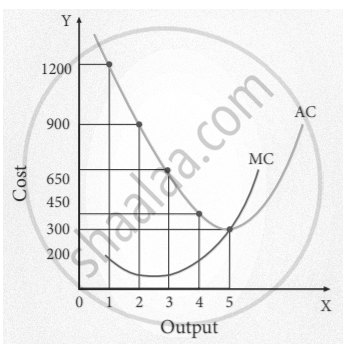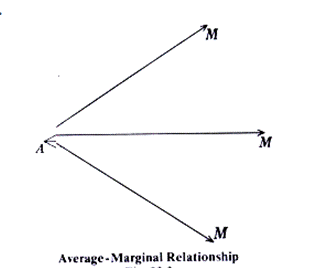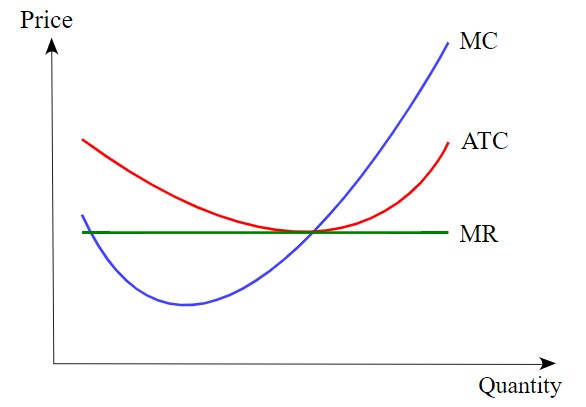Introduction
An entrepreneur must understand the relationship between average and marginal costs within their business. The success of a firm is dependent on how much the owner knows since the body of knowledge can aid in a better decision-making process. Many startups have failed as a result of individuals ignoring the fact that their knowledge level can be impactful to the success of the business. In the field of business regardless of sector, having information concerning various aspects of the business protects a company from certain risks or losses. The paper focuses on the relationship between average and marginal costs and importance of an entrepreneur’s knowledge about it.
Description of Average Cost and Marginal Cost
Marginal Cost
It is important for an entrepreneur or business owner to have information about the relationship between average cost and marginal cost. According to economists, the former refers to a change in the total costs when the number of goods produced alters by a unit. It is equivalent to the expenses of producing a single more unit of an item (Brouwer et al., 2019, p. 176). It comprises every cost that varies depending on the production level. For instance, in the event a company chooses to invest in another piece of equipment with the intention of producing more commodities, the expenses incurred will be the marginal cost. The cost varies based on the volume of produced goods (Brouwer et al., 2019, p. 176). Economic factors that influence it include positive and negative externalities, information asymmetries, price discrimination, and transaction costs (Brouwer et al., 2019, p. 177). It is important to understand that marginal cost is not associated with fixed costs (Edney et al., 2021, p. 13). An instance of computing marginal cost is: that producing one pair of shoes is thirty dollars (Craig, Grennan, and Swanson, 2021, p. 155). The total cost for manufacturing two pairs is forty dollars. The marginal cost in this scenario is ten dollars, as it is the amount that is above the cost of making the initial pair.
Average Cost
Economists state that average cost refers to total costs divided by the number of produced goods. One can additionally claim that it is the summation of average variable as well as average fixed costs (Hayes, 2019, p. 554). It is influenced by the period of production since research shows that increasing production may prove difficult in the short term (Alfonso et al., 2019, p. 23). It is the driving factor of supply of not only supply but demand within the market. Business analysts assess both short and long-run average costs (Alfonso et al., 2019, p. 24). The former expenses change depending on the number of items manufactured. The long-run expenses comprise the variation of amounts utilized for every input needed for production.
Relationship Between Average Cost and Marginal Cost
First Case
It is noteworthy to state that average, as well as marginal costs are dependent on each other, and the association should be understood well. When the average cost falls, the marginal cost is less than the average cost (Kordsachia, 2021, p. 20). When it is rising, the marginal cost is higher than the average cost (Shahriar et al., 2021, p. 6). However, in the event that marginal cost does not change, the average and marginal costs are equal.

In the figure above, up to the fifth unit, the average cost is falling. It can be seen from the fourth column that from the second to the fifth unit of output, marginal cost is less than the corresponding average cost (Siverskog and Henriksson, 2019, p. 760). However, from the sixth to the tenth unit, the average cost is increasing, as seen in figure 1.0 (Shaalaa, 2022). Additionally, it will be witnessed from the image that marginal cost is higher than the average cost in that range.
A straightforward arithmetical illustration will reveal the average cost and marginal cost relationship. For instance, a cricket player records fifty as his batting average. In the event in the following game, he scores less than that, for example, forty-five, the batting average decreases. The reason for this is due to his additional score being less than average. However, if in that match he scored more than his initial average, his average goes up since the new score is greater. Thus, it is safe to conclude that if the marginal rises, the average increases, and vice versa. When the marginal remains in a similar position, then both are equal.

The above diagram shows the average-marginal cost association. As seen in figure 2.0, A depicts the average cost, while M is the representation of the marginal cost (Economics Discussion, 2014). On the one hand, one can see that when marginal cost is above the average cost, the latter increases which are revealed by the rising arrow (Srinivasan, 2019, p. 5). On the other hand, when M is below A, then the latter falls, as indicated by the falling arrow (Srinivasan, 2019, p. 5). However, when the marginal cost is similar to the average cost, the latter remains constant, as if the former is pulling it horizontally.
Second Case
The average cost as well as marginal cost influence one another during fluctuation in production.

The curves indicate how all the costs change with a rise in the product price or produced quantity. When the average cost drops, the marginal cost becomes less than the average cost, as seen in figure 3.0 (Saylor Academy, 2022). When it increases, the marginal cost becomes greater than it. Lastly, when it remains constant, whether, at a maximum or minimum, the marginal cost becomes equal to the average cost.
Importance of Understanding the Two Types of Costs
It is important for an entrepreneur to understand that the average cost has the potential to determine the long-run price as well as the supply of a good and consists of normal profits. Therefore, in the event the price of an item is above its average cost, the business secures more profit (Yang et al., 2019, p. 35). If the price is less than the average cost, the business experiences a loss (Yang et al., 2019, p. 35). Marginal cost refers to an essential factor in economics theory since a firm aiming to maximize its profits will produce to an extent where marginal cost becomes equal to marginal revenue. Beyond this, the cost of manufacturing an extra unit will exceed the generated revenue.
Conclusion
The essay has explained the average and marginal costs and illustrated why it is important for an entrepreneur to understand the relationship between them. Economists have described marginal costs as a change in the total costs in a scenario the number of goods manufactured alters by an extra unit. This can be equivalent to the expenses of making a single more unit of the item.
In addition to that, the paper shows that the average cost refers to total costs divided by the number of produced goods. Furthermore, it suggests that an entrepreneur needs to understand the association between average as well as marginal costs in a business. When the average cost no longer rises, the marginal cost becomes less than the average cost. When it is increasing, however, the marginal cost becomes higher than the average cost. In the event that the marginal cost shows no change, the average and marginal costs become equal.
The paper has provided an example where it states that assume the batting normal of a cricket player is fifty. In the occasion in the accompanying game, he scores not exactly that, for instance, 45, the batting normal reduces. The justification behind this is as a result of his extra score being not normal. Notwithstanding, if in that match he scored more than his underlying normal, his normal goes up since the new score is more noteworthy. Hence, it is protected to infer that if the marginal ascents, the average increments, as well as the other way around. When the marginal remains in a similar position, then both are equivalent. This is proof that average as well as marginal costs, are dependent on each other, and the association should be understood well for the benefit of the business.
Reference List
Alfonso et al. (2019) ‘A marginal cost analysis of a Big Brothers Big Sisters of America youth mentoring program: New evidence using statistical analysis’, Children and youth services review, 101, p. 23-32.
Brouwer et al. (2019) ‘When is it too expensive? Cost-effectiveness thresholds and health care decision-making’, The European Journal of Health Economics, 20(2), p. 175-180.
Craig, S.V., Grennan, M. and Swanson, A. (2021) ‘Mergers and marginal costs: New evidence on hospital buyer power’, The RAND Journal of Economics, 52(1), p. 151-178.
Economics Discussion. (2014) ‘Relationship between Marginal Cost and Average Cost (With Diagram)’.
Edney et al. (2021) ‘Empirical estimates of the marginal cost of health produced by a healthcare system: methodological considerations from country-level estimates’, PharmacoEconomics, p. 1-13.
Hayes, A.S. (2019) ‘Bitcoin price and its marginal cost of production: support for a fundamental value’, Applied economics letters, 26(7), p. 554-560.
Kordsachia, O. (2021) ‘A risk management perspective on CSR and the marginal cost of debt: empirical evidence from Europe’, Review of managerial science, 15(6), p. 11-43.
Saylor Academy. (2022) ‘Production Cost: Average and Marginal Cost’.
Shahriar et al. (2021) ‘Financial decision making and forecasting techniques on project evaluation: a planning, development and entrepreneurial perspective’, Academy of Entrepreneurship Journal, 27(4), p. 1-7.
Shaalaa (2022) ‘State the relationship between AC and MC’ – Economics.
Siverskog, J. and Henriksson, M. (2019) ‘Estimating the marginal cost of a life year in Sweden’s public healthcare sector’, The European Journal of Health Economics, 20(5), p. 751-762.
Srinivasan, S. (2019) ‘Power relationships: marginal cost pricing of electricity and social sustainability of renewable energy projects’, Technology and Economics of Smart Grids and Sustainable Energy, 4(1), p. 1-12.
Yang et al. (2019) ‘A dual mode distributed economic control for a fuel cell–photovoltaic-battery hybrid power generation system based on marginal cost’, International Journal of Hydrogen Energy, 44(46), p. 29-39.